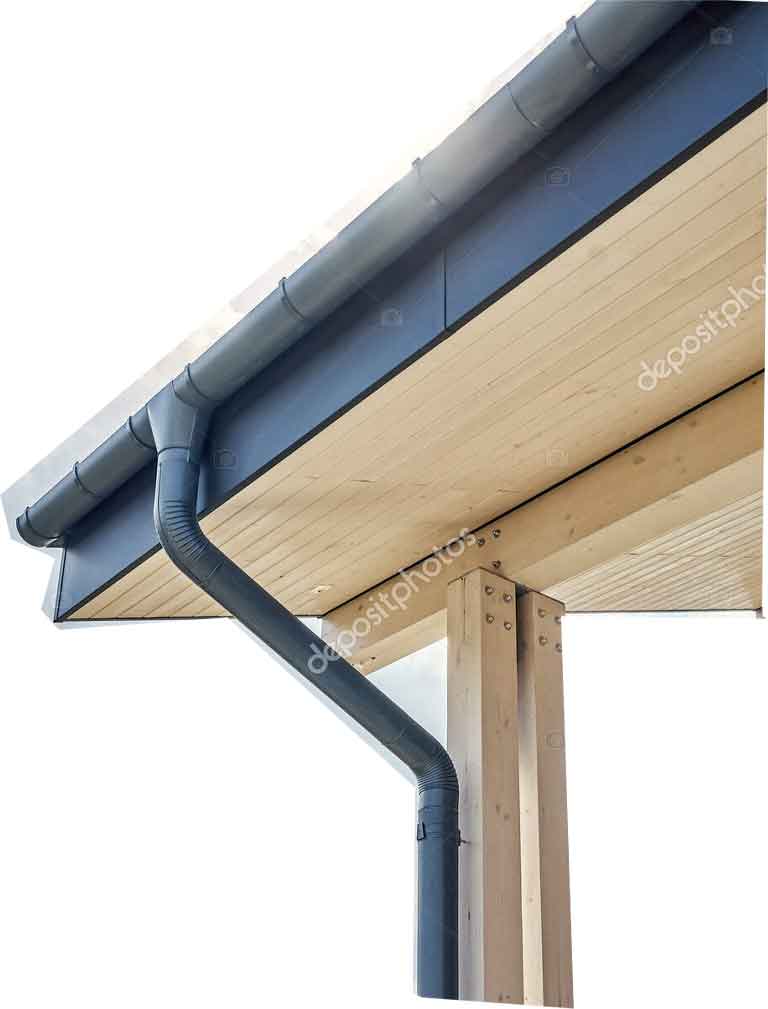Signs You Need a New Roof: Don’t Ignore These Red Flags!
Let’s kick things off by discussing the telltale signs that your roof is past its prime and in need of replacement.
1. Missing or Damaged Shingles
- Take a peek at your roof. Do you notice any shingles that are cracked, curling, or missing altogether? These are signs of wear and tear that indicate your roof may need replacing. When you see these indicators, it’s crucial to choose roof replacement before further damage occurs.
2. Water Stains on Ceilings or Walls
- If you spot water stains on your ceilings or walls, it’s a clear indication that your roof isn’t doing its job of keeping water out. This could be due to leaks caused by damaged or deteriorating roofing materials.
3. Sagging Roof Deck
- A sagging roof deck is a serious issue that indicates structural damage. If you notice any areas of your roof sagging or dipping, it’s time to call in the professionals for a thorough inspection.
4. Granules in Gutters
- Check your gutters for an excessive buildup of granules. These granules are protective coatings on asphalt shingles that wear away over time. If you’re finding a lot of granules in your gutters, it’s a sign that your shingles are nearing the end of their lifespan.
5. Age of Your Roof
- Finally, consider the age of your roof. Most asphalt shingle roofs last between 20 to 30 years, while other materials like metal or tile can last even longer. If your roof is approaching or exceeding its expected lifespan, it’s wise to start thinking about replacement.

How to Do Roofing Step by Step: The Roof Replacement Process Demystified
Now that you’ve identified the signs that it’s time for a new roof, let’s walk through the roof replacement process step by step.
Step 1: Inspection
- Start by scheduling a professional roof inspection. A qualified roofer will assess the condition of your roof and provide recommendations for replacement.
Step 2: Choose Your Materials
- Next, it’s time to choose the right roofing materials for your home. Consider factors like durability, cost, and aesthetics when making your selection.
Step 3: Obtain Permits
- Before work can begin, you’ll need to obtain any necessary permits for your roof replacement project. Your roofing contractor can assist with this process.
Step 4: Tear Off Old Roofing
- Once permits are in hand, the old roofing materials will be removed to make way for the new roof. This step is crucial for ensuring a solid foundation for your new roof.
Step 5: Installation
- With the old roofing removed, it’s time for the installation of your new roof. Your roofing contractor will expertly install the chosen materials, paying careful attention to detail.
Step 6: Clean-Up
- Once the new roof is in place, the job isn’t quite finished yet! Your contractor will clean up any debris and ensure your property is left neat and tidy.

Popular Roofing Materials: Choose the Right One for Your Home
Now that you know the process, let’s dive into some of the most popular roofing materials on the market.
1. Asphalt Shingles
- Asphalt shingles are a popular choice due to their affordability and versatility. They come in a wide range of colors and styles to suit any home.
2. Metal Roofing
- Metal roofing offers durability and longevity, making it an excellent choice for homeowners looking for a long-term solution. It’s also energy-efficient and environmentally friendly.
3. Wood Shake or Shingles
- Wood shake or shingle roofs add rustic charm to any home. While they require more maintenance than other materials, many homeowners find the natural beauty worth the effort.
4. Slate Roofing
- Slate roofing is known for its elegance and durability. While it comes with a higher price tag, its timeless appeal and long lifespan make it a worthwhile investment for some homeowners.
5. Tile Roofing
- Tile roofing is prized for its durability and distinctive appearance. While it can be more expensive than other options, its long lifespan and low maintenance requirements make it a popular choice.
How to Tell If Your Roof Is Damaged: Tips for Homeowners
Lastly, let’s cover some tips for identifying roof damage before it becomes a major issue.
- Regular Inspections: Schedule annual inspections with a professional roofer to catch any issues early.
- Keep Gutters Clean: Clogged gutters can lead to water damage on your roof, so be sure to clean them regularly.
- Look for Warning Signs: Keep an eye out for signs of damage, such as missing shingles, cracked flashing, or water stains on your ceilings.
By staying vigilant and addressing any issues promptly, you can prolong the lifespan of your roof and avoid costly repairs down the line.
Conclusion
Knowing when to replace your roof is essential for maintaining the integrity and value of your home. By keeping an eye out for warning signs, scheduling regular inspections, and choosing the right materials for your needs, you can ensure that your new roof will provide years of protection and peace of mind. And remember, our team is here to help every step of the way, from inspection to installation. Let’s keep your home safe and secure for years to come!
FAQs
- How often should a roof be replaced in Florida?
Florida’s climate can shorten a roof’s lifespan. Asphalt shingles, common in Florida, typically last 15-20 years, while metal roofs can last 40-50+ years. Regular inspections and proper maintenance are key. - What time of year is cheapest to replace a roof?
Fall and spring often see lower demand and potentially better pricing compared to peak summer heat. However, the best time depends on weather and your contractor’s schedule. Get quotes year-round to compare. - Does a new roof increase home value?
Yes, a new roof can increase your home’s value, especially if the old roof was nearing the end of its lifespan. A new roof improves curb appeal and protects your home, making it more attractive to buyers. - How do I know if my roof is bad?
Look for signs like missing or damaged shingles, leaks, water stains on ceilings or walls, sagging roof deck, or excessive moss growth. Schedule a professional inspection for a more thorough assessment. - Is it better to remove the old roof (tear-off) or install over it (re-roof)?
Generally, a tear-off is recommended for most replacements. It allows for a proper inspection of the underlying roof deck and ensures a smooth, even surface for the new shingles. Re-roofing might be an option in limited situations, but consult a professional for your specific case.











